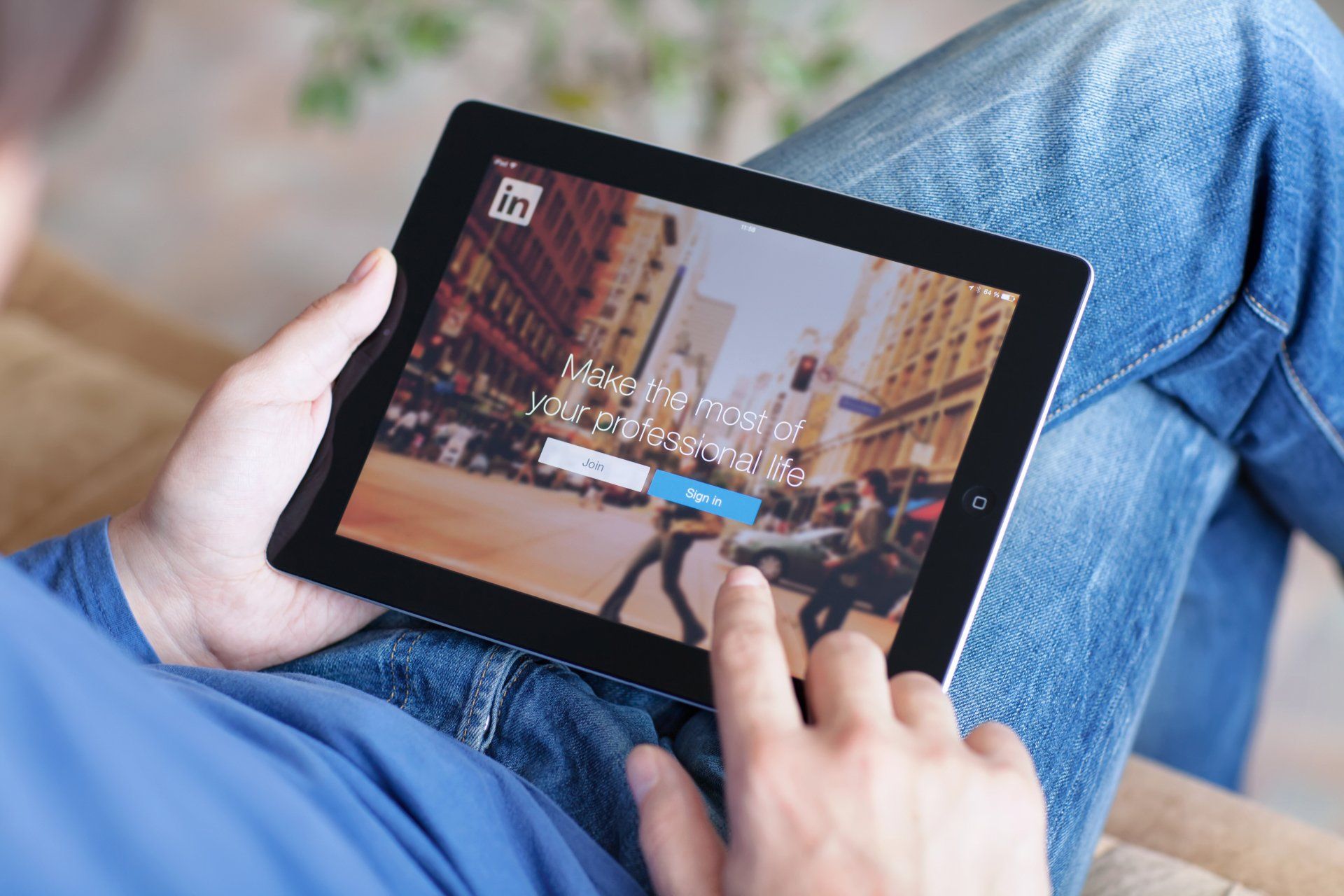What do you use LinkedIn for?
It’s great for searching for new employees or for finding yourself a new job. But if that’s all you’re using it for, you are not getting the full potential and value out of LinkedIn.
LinkedIn is unique in that it is both somewhere for conducting business and a social media site. So
it’s a great place to promote yourself, find relevant business groups and meet new people, who could become future clients or contacts.
To build your customer base and increase sales of your products and services, you need to bring more traffic to your business website. LinkedIn is a great tool for bringing the right people to your website, but it is important to
hook them straightaway with a LinkedIn profile they can’t ignore.
So how do you bring in more potential customers using LinkedIn?
Check out our top tips below!
Write a brilliant profile summary - make an impression. Your LinkedIn profile summary is one of the first things people see when they visit your profile, so it’s important to make it work for you. Some people choose not to write a summary at all on their LinkedIn profile, but they’re missing a trick.
Your profile summary creates your first impression and is the easiest way to set you apart from other LinkedIn users. There are 2,000 characters available to strengthen your profile, add some personality, tell your career story and inspire action from your connections.
Get the keywords
right in your summary
LinkedIn’s search algorithms use keywords in your profile to match you with searches, so it’s important to get them right.
Make sure you’re using the best keywords by searching other businesses like your own.
Which keywords do they use? Then search for your own company as if you were a potential client. Which keywords do you use in your search? Those are the keywords which need to be in your summary.
But don’t go too far and cram your summary full of keywords right from the start. Choose the ones which seem to work best and you can adjust them over time to make your summary more precise. The most important thing is to always be thinking of keywords when you write and update your summary, and that you are always aware of new ones which will bring you the most traffic.
Make your first sentences count
First impressions matter
and that is especially important for LinkedIn, which will only show the first two or three sentences of your summary to visitors. You have just a few lines available to help visitors decide whether they want to click and find out more, so those first sentences really need to count.
In those sentences you need to be engaging, pull people in and you need to motivate them to take action.
With limited space available, practise writing directly and without additional, unnecessary words. For example, ‘We would be happy to hear from you’ can be expressed as ‘Give us a call’. This cuts down on words, speaks more directly and is less conditional. By cutting out a few words, you have more space for keywords, which are more effective in matching your business with searches.
Make the most of your word count
Your LinkedIn profile summary has a limit of 2000 characters (letters, spaces and punctuation), which should give you about 300-350 words. It’s important to use this as effectively as possible and make sure you use every last word that you can.
The more words you include, the more keywords you can add!
But using up all of your word count doesn’t mean padding your summary out. On the contrary, it means being strict and cutting out unnecessary words so you can keep it clear and direct.
Connect, connect, connect!
LinkedIn isn’t Facebook. It isn’t just about friends and people you know in real life, it’s about connections. While real life friends and colleagues may be a good place to start, you need to connect far more widely to make a difference for your business.
When you are doing your keyword search, send an invitation to connect to everyone who comes up in your searches.
The more connections you have, the bigger audience you have for your posts.
More connections also mean you will appear in more search results, as a suggestion for people with common interests or friends. Whether you have a common interest, you are in the same industry or you are based in the same town, all of these people are useful connections. They may go on to become clients, or they may be the link you need to connect with potential clients you otherwise wouldn’t have come across.
Don’t forget to post
As a social network, LinkedIn isn’t just about setting up your profile, making connections and leaving it there. While your summary will help people to find you, being active and engaging is what keeps them interested.
To make the most of LinkedIn, you need to regularly update your status by sharing interesting posts. This could be something from your own business, something from the wider industry or a news article you think your connections would find interesting. If you are sharing content from another site, it is a good idea to add your thoughts, comments or questions as an introduction, so your connections know why you are sharing the article.
If your post is something you have written yourself, don’t forget to include a link back to your own website at the end.
Like, comment and engage
Just like you, people are posting on LinkedIn to further their career and boost their business. Everyone will appreciate a positive comment and it will make them likely to check out your profile too.
But, more importantly, LinkedIn rewards people who post engaging content and comments.
This means that your profile becomes more visible in searches.
You can give a simple like (a thumbs up, just the same as Facebook) to a post, but to improve your profile’s visibility, you need to leave meaningful comments. These will get you noticed by their author and their connections. Don’t forget to be professional, relevant and polite, and to double check your spelling and grammar. Comments aren’t the place for blatant self-promotion. If the author or their connections want to find out more about you, they can check your profile.
Use hashtags
Just like Twitter and Instagram, LinkedIn uses hashtags. When you post a status update on on LinkedIn, make sure you use relevant hashtags, especially for your keywords. This means your posts will come up in hashtag searches. When a visitor clicks an identical hashtag in someone else’s post, they will see your post alongside others with the same hashtag.
Hashtags can either be integrated in the post eg ‘Check out my new article about #InstagramHashtags and let me know what you think’ or they can be added at the end of a post.
Avoid using hashtags that are too general
– like #article or #marketing. Too many irrelevant hashtags can come across as annoying and can create a negative impression of your business.
If used correctly, LinkedIn hashtags have the potential to grow your LinkedIn connections and ultimately bring more business to your website.
By putting a bit of time and effort into LinkedIn, you can really improve your engagement with the right people, to build your customer base.









